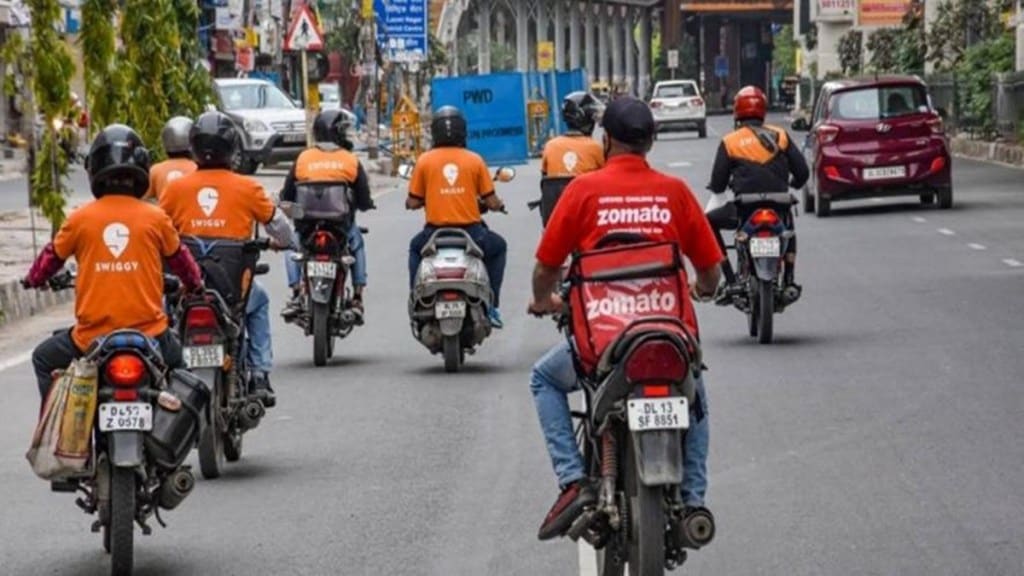Even as Zomato and Swiggy ramp up their quick commerce operations, their core food delivery business is witnessing slowing growth, adding to their financial pressures. Rising competition in the q-comm segment has forced both companies to increase spending, thereby impacting profitability. Analysts expect this trend to persist for the next two quarters before a potential turnaround.
Both companies reported weaker-than-expected earnings for Q3FY25. Zomato’s net profit dropped 57% y-o-y to Rs 59 crore, while Swiggy’s losses widened to Rs 799.08 crore from Rs 574.38 crore a year earlier.
While revenues remain robust — Zomato’s consolidated revenue grew 64% to Rs 5,405 crore and Swiggy’s 31% to Rs 3,993 crore — rising expenses have squeezed margins. Zomato’s expenses surged 63.55% to Rs 5,533 crore and Swiggy’s climbed 32.38% to Rs 4,898.27 crore.
Adding to these challenges, food delivery growth has slowed. Zomato’s food delivery gross order value (GOV) rose 17% y-o-y to Rs 9,690 crore, but grew just 2.3% sequentially. Swiggy’s GOV rose 19.2% y-o-y to Rs 7,436 crore, but was up only 3.4% q-o-q.
“Currently, we are going through a broad-based slowdown in demand that started in the second half of November,” said Rakesh Ranjan, CEO of Zomato’s food ordering and delivery business, last month.
The q-comm landscape has become increasingly competitive, with new entrants like Zepto aggressively expanding. Shobit Singhal, research analyst at Anand Rathi Institutional Equities, highlights that Zepto, a major rival to Blinkit and Instamart, has been burning Rs 350-400 crore per month to fuel its expansion. “Because of that, Blinkit and Swiggy have also started burning more cash to maintain market share,” he noted.
This intensified competition has impacted margins. In Q2FY25, Blinkit was near break-even, but its adjusted Ebitda margins slipped to -1% in Q3. Instamart’s margins fell from -10.6% in Q2 to -14.8% in Q3.
Both remain committed to aggressive expansion. Zomato plans to double its dark store count from 1,000 to 2,000 by December, while Swiggy aims to increase its dark store footprint from 2.45 million sq ft to 4 million sq ft by March through a mix of new stores and expansions.
Despite the Q3 slowdown, analysts believe food delivery will remain the primary revenue driver for both companies. “We believe food delivery remains a stable duopoly,” stated Motilal Oswal Financial Services.
Singhal pointed out that even QSR chains reported a slowdown in Q3. “Even though the food delivery market appears to be approaching saturation, Zomato and Swiggy are likely to continue growing at 18-20% annually,” he said.
Analysts expect Zomato and Swiggy to hold an advantage in q-comm over newer players, with a turnaround anticipated after two quarters as dark stores mature. Both companies have indicated that dark stores take around six months to generate positive margins.
“The high number of new stores is driving short-term inefficiencies, but this will correct as expansion slows and utilisation increases — typical of a retail business,” Jefferies noted in a recent report. “Mature stores have mid-single-digit contribution margins with room for further improvement.”
Elara Securities echoed this view, saying, “Swiggy’s Q3 performance in quick commerce strengthened our confidence in Zomato’s execution as well”.
Meanwhile, Zepto, which is eyeing an IPO, may have to temper its aggressive cash burn strategy.
On Thursday, Zomato and Swiggy stocks continued their downward slide. Swiggy fell 6.9% to Rs 388.90, while Zomato dropped 0.95% to Rs 229.05 on the BSE.
